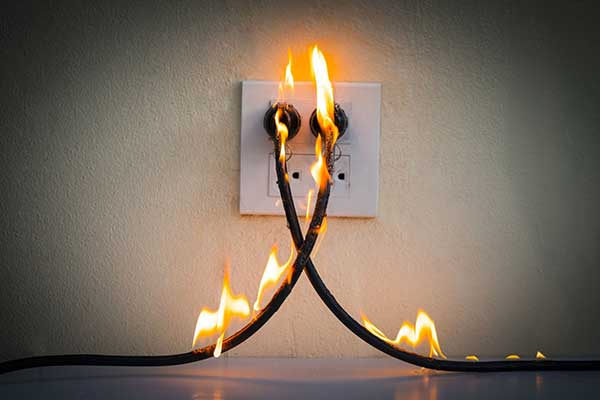South African short-term insurers have reported a 60% increase in claims for destruction to people’s property due to power surges because of load shedding in 2022.
Recently, some insurance companies started demanding that homeowners have a Surge Protection Device (SPD) installed or else they will not be able to claim for damage caused by a power surge.
Dr Andrew Dickson, Engineering Executive at CBI-electric low voltage, has since cautioned consumers to check the fine print on their policies to see whether this applies to them.
“If they don’t check their policies if this applies to them, they could be in for a nasty and costly shock should their home be hit by a power surge,” said Dr Dickson.
He explained that with load shedding, when the electricity is turned back on at a substation, it can send through a voltage pulse of several thousand volts into the network.
“The problem is that the average home runs on 230 Volts, so when the lights come on again, all electrical items, including your lights and appliances, may receive an unexpected voltage spike, followed by a power surge of the returning main supply,” he said.
“This only lasts for a microsecond, but it is enough to result in a point of failure within equipment which may cause significant damage.”
Dr Dickson also pointed out the advantages of installing SPDs in households, and how it can save homeowners from replacing damaged property.
“While they may be a grudge purchase, SPDs can limit the high peak voltages, diverting that extra electricity away from your distribution board. Plus, they cost a lot less than having to buy a new TV, or worse, your fridge or gate motor.”
Furthermore, he described the functions of different types of SPD’s and that insurance companies usually advise on the kind of SPD you should use.
“Different SPDs can absorb different amounts of energy. If these levels are exceeded, it could affect the device which is why all SPDs have an indicator to show the user that it is either operational or at the end of its life.”
To ensure that homeowners can claim should a power surge cause damages, Dr Dickson advises that customers follow the SPD installation requirements contained within their policies.
“They should also check the devices after load shedding or a storm to see if the indicator still shows that they are in good working order.”
“While SPDs are risk mitigation measures, they will eventually fail so need to be checked on a regular basis, especially with Eskom announcing that ‘protracted load shedding’ will continue for the foreseeable future,” added Dr Dickson.
Meanwhile, Eskom had advised residents in Onrusriver/Vermont to switch off stoves, geysers, pool pumps and all electrical appliances during loadshedding. Eskom said that customers should wait 30 minutes before switching on stoves, geysers, and pool pumps to avoid possible tripping of electricity.
“Cold load pickup happens when a distribution circuit is re-energized after an extended outage, where the current is high enough to cause a rapid overcurrent that may cause the electricity supply to trip,” said the power utility.
Additional reporting by Shona Buhr
Follow @SundayWorldZA on Twitter and @sundayworldza on Instagram, or like our Facebook Page, Sunday World, by clicking here for the latest breaking news in South Africa. To Subscribe to Sunday World, click here.




I don’t think the title of your article matches the content lol. Just kidding, mainly because I had some doubts after reading the article.